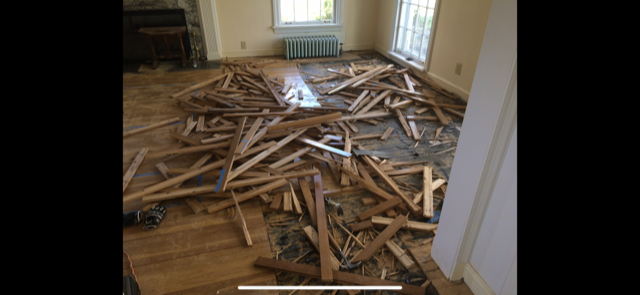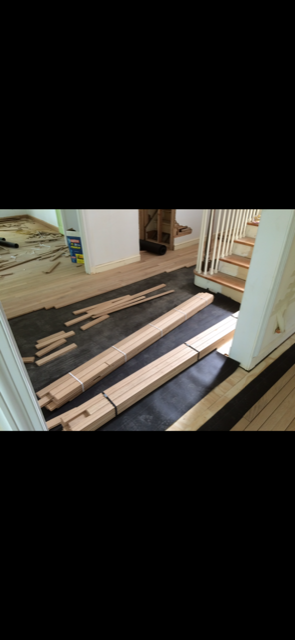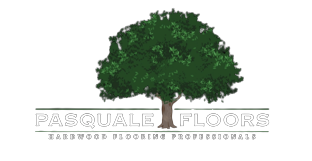
Do I have to replace my hardwood floors?
In the area we serve, which is most of Cleveland Ohio and surrounding areas, the homes are either, new construction, mid-century homes and/or homes that are 125+ years old. How do you know if your floors can be sanded/salvaged or if you need to tear them out and replace with new? Great question, I’m glad you asked! Let’s get into it!
FLOOR ANATOMY:
Most wood flooring in the Cleveland area is 3/4” thick with a “sandable” wear layer of 1/4”, meaning the top layer of the wood floors only have 1/4” of wood that can be sanded the other 1/2” makes up the tongue and groove and then the base layer that lays on top of the substrate (plywood, OSB, concrete etc). Generally sanding a wood floor will remove approximately 1/16th of an inch. Maybe more, maybe less, depending on who you hire and what sanding sequence they use. An informed contractor, will take the least amount of wood off your floors, when the project is completed. This is ALWAYS our goal.
Some of the more affordable wood floors are only a 1/2 thick with a varying, thin wear layer, usually less than 3/16” and as thin as 1/32”. Quite often, these floors can not be sanded, or can only be sanded one time, then off to the dumpster. It makes a lot more sense to spend the extra money on a 3/4” product that will last a lifetime.
SIGNS YOU NEED TO REPLACE YOUR WOOD FLOORS:
AGE. Generally, when you see multiple boards starting to become compromised or start to crack/split. We see this quite often now in more historic areas of Cleveland like Lakewood, Shaker heights, Cleveland heights, Bratenahal etc. These floors now are 100 years old or more and have been sanded, multiple times. The issue is that the top 1/4” of “sandable” wood is too thin. When you see the wood splitting, it usually happens on the groove side of the wood, think about it, it is hollow on that side, the other side has the tongue. Removing and replacing these boards, most of the time is not an option as this will continue to happen and could be throwing good money at bad. If your wood floors are showing nail heads, from the original install, this also is a sign there is no wood left to sand. These nails were originally buried under the 1/4” of “sandable” wear layer and now are exposed.
WATER DAMAGE: A large water leak/storm damage etc where the floors take on a substantial amount of water and are heaving from the subfloor or buckling (tee-pee effect) can result in full replacement. If the water damage is small, quite often they can be salvaged by sanding.
STRUCTURAL DAMAGE: You hear lots of cracking, popping or squeaking when you walk on your floors. They also could be spongy or soft in certain areas. Excessive movement with many boards as you walk, also means that the wood floor is compromised or the subfloor (if you have one) could also be compromised.
PET URINE: Quite often dog/cats tend to mark in the same areas of your wood floors, once they start. When they do this, over time, your floors will become blushed (white-ish) at first, then longer term, they will get gray/black. Once they are black, they most likely will not sand out. Quite often you will see larger gaps in between the floorboards too with this amount of damage as the floorboards expand with the urine then they dry out and shrink over time.

